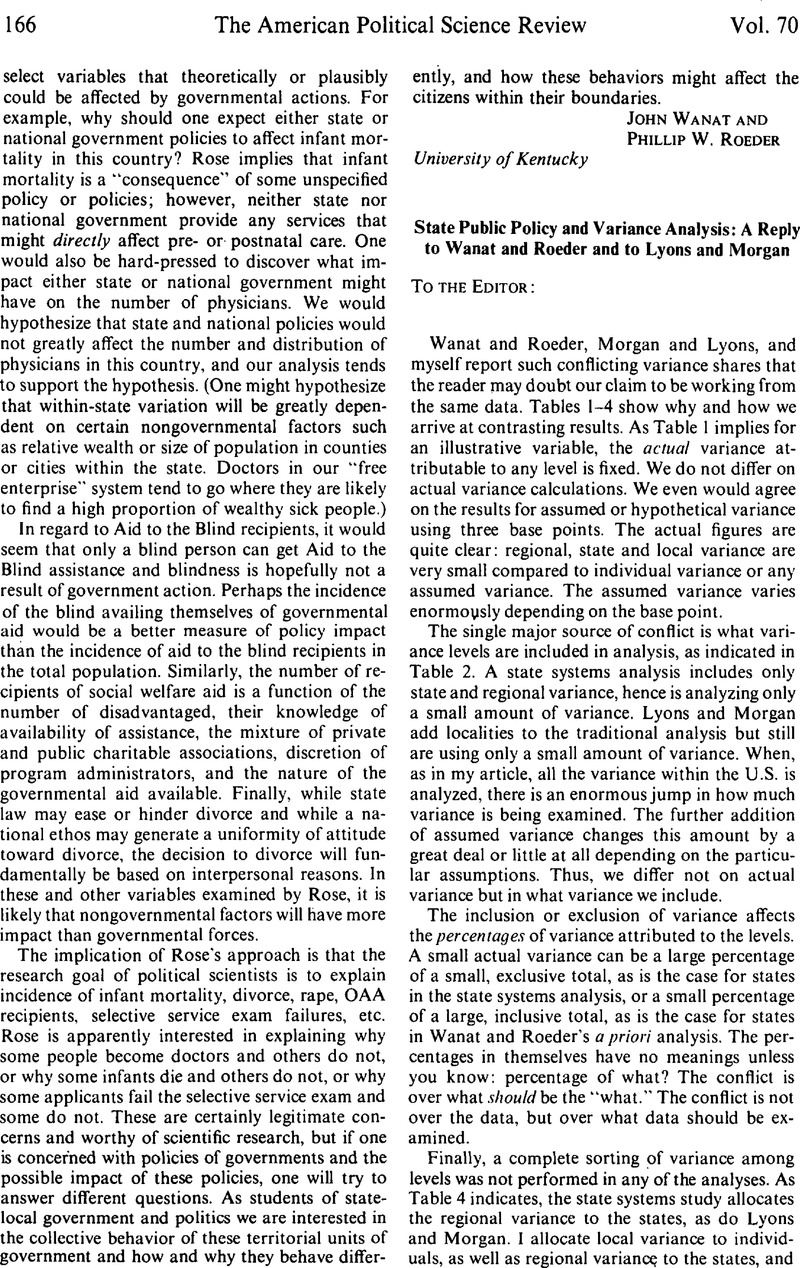Article contents
State Public Policy and Variance Analysis: A Reply to Wanat and Roeder and to Lyons and Morgan
Published online by Cambridge University Press: 01 August 2014
Abstract

- Type
- Communications
- Information
- Copyright
- Copyright © American Political Science Association 1976
References
1 Lyons and Morgan are correspondingly at pains to deny that geographical proximity of states (region) has any consequences for the behavior of states or cities. I disagree with their absolutist position and believe proximity is often a facilitator and sometimes a necessary condition of types of interactions among states. I agree, however, that region cannot be used analytically unless its role is carefully modeled. For a further discussion, see my “Citizen Preference and Public Policy in the American States,” in Perspectives on Public Policy-Making, Gwyn, William B. and Edwards, George C. III, editors, Tulane Studies in Political Science, Vol. XV (New Orleans: Tulane University, 1975), 55 ff.Google Scholar, and “Comment: The American States' Impact on Voter Turnout,” American Political Science Review, 69 (03, 1975), 126, 130 Google Scholar.
2 “National and Local Forces in State Politics,” American Political Science Review, 67 (12, 1973), 1164–1165 Google Scholar.
3 Ibid.
4 Hays, William L., Statistics for Psychologists (New York: Holt, Rinehart and Winston, 1963), p. 180 Google Scholar.
- 1
- Cited by





Comments
No Comments have been published for this article.